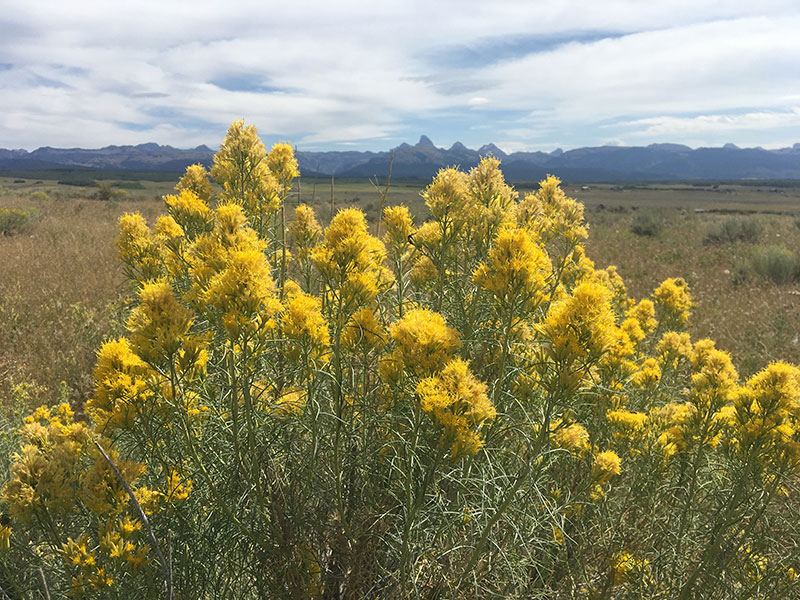Ericameria nauseosa / rubber rabbitbrush
- golden-yellow flower heads in profusion
- small 5-petaled flowers
- widespread shrub
- very narrow, linear leaves
- white sticky sap (“rubber”)
Also known as: gray rabbitbrush, chamisa
Although Earle and Lundin say that the rabbitbrush group is a confusing jumble, and that there are 22 varieties of this one species, it sufficed for them and for us to simply say that the photos here are representative. In any case, this plant (or group) is a highly visible feature of the landscape in late summer and autumn. It grows on hillsides where there are no or few trees, and thus turns the landscape yellow before the aspens turn and in places where they are not.
The bright yellow flower heads of this perennial shrub are comprised of large numbers of attractive 5-petaled flowers, the bases of the petals being fused into a tube. If you have gotten close enough to notice this without seeing the plant itself, you have a future as a “real botanist”. On the other hand, your attention might have been drawn to this by the presence of butterflies, bees or other insects gathering pollen.
Rabbitbrush reproduction is both from seeds (light and feathery like many other composites) or by basal sprouting. This is important in its usual habitat – poor, coarse, alkaline soils (most of the Valley), degraded rangelands, roadsides, abandoned fields. Its deep root system helps stabilize degraded soil, and its dropped leaves add rich-ish organic matter to the surface.
Like other resinous plants, rubber rabbitbrush is rather poor forage for livestock. On the other hand, it can be an important winter browse plant for mule deer and pronghorns.
All this good stuff and more qualified this to be a “plant of the week” (for some unspecified week) on the US Forest Service wildflower site. Have a look.
| Color | |
|---|---|
| Family | |
| Blossom size | |
| Inflorescence size | |
| Inflorescence type | |
| When? | |
| Where? |



